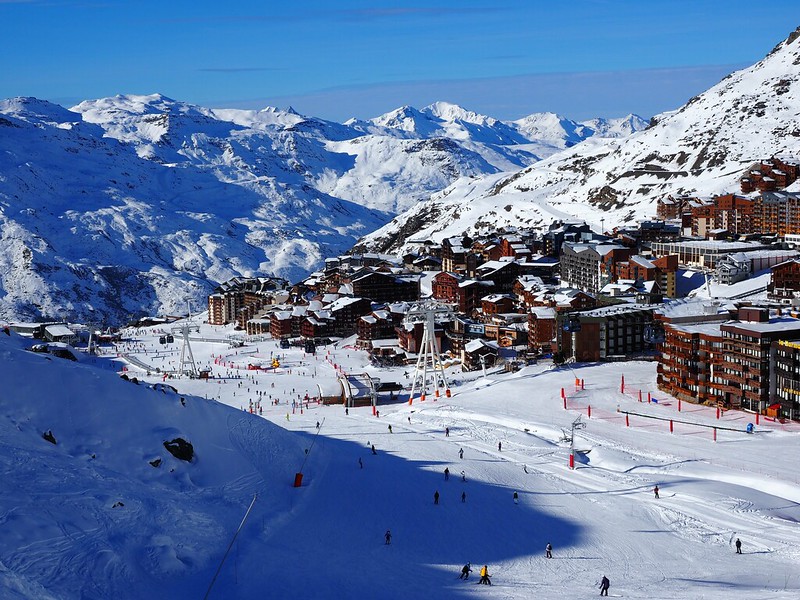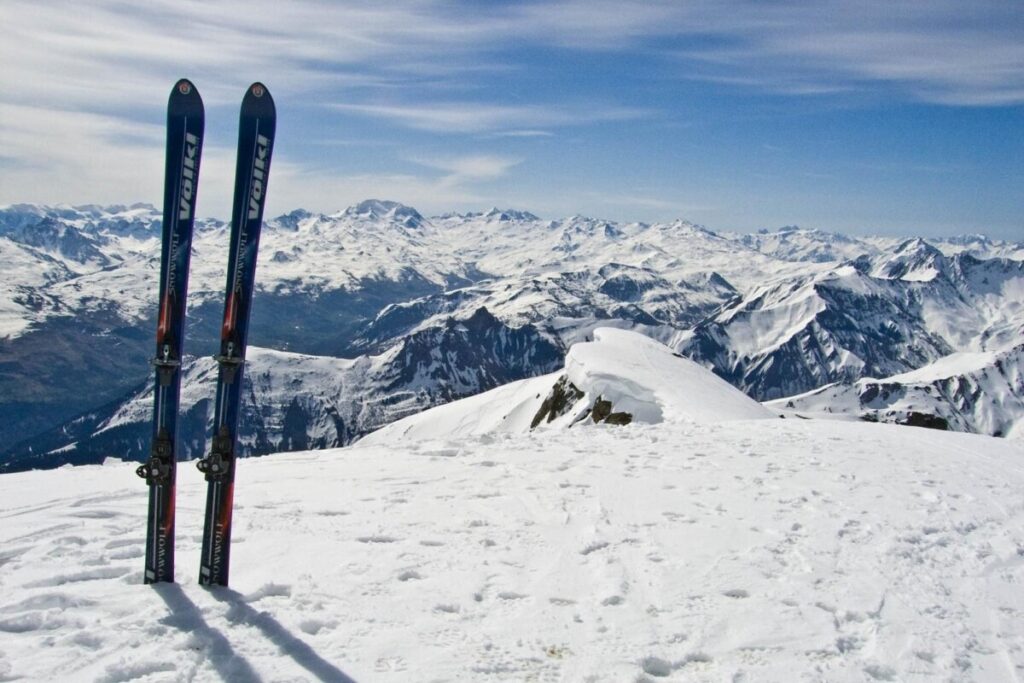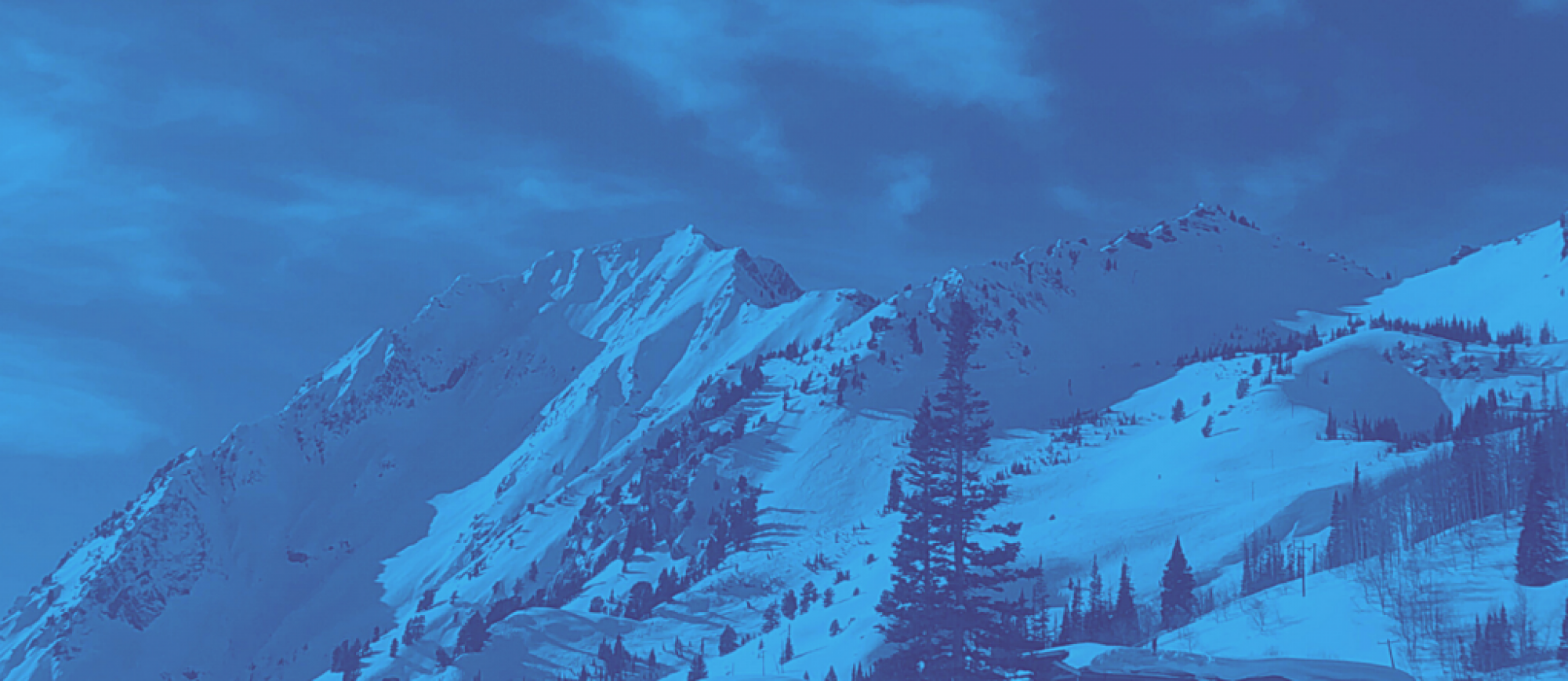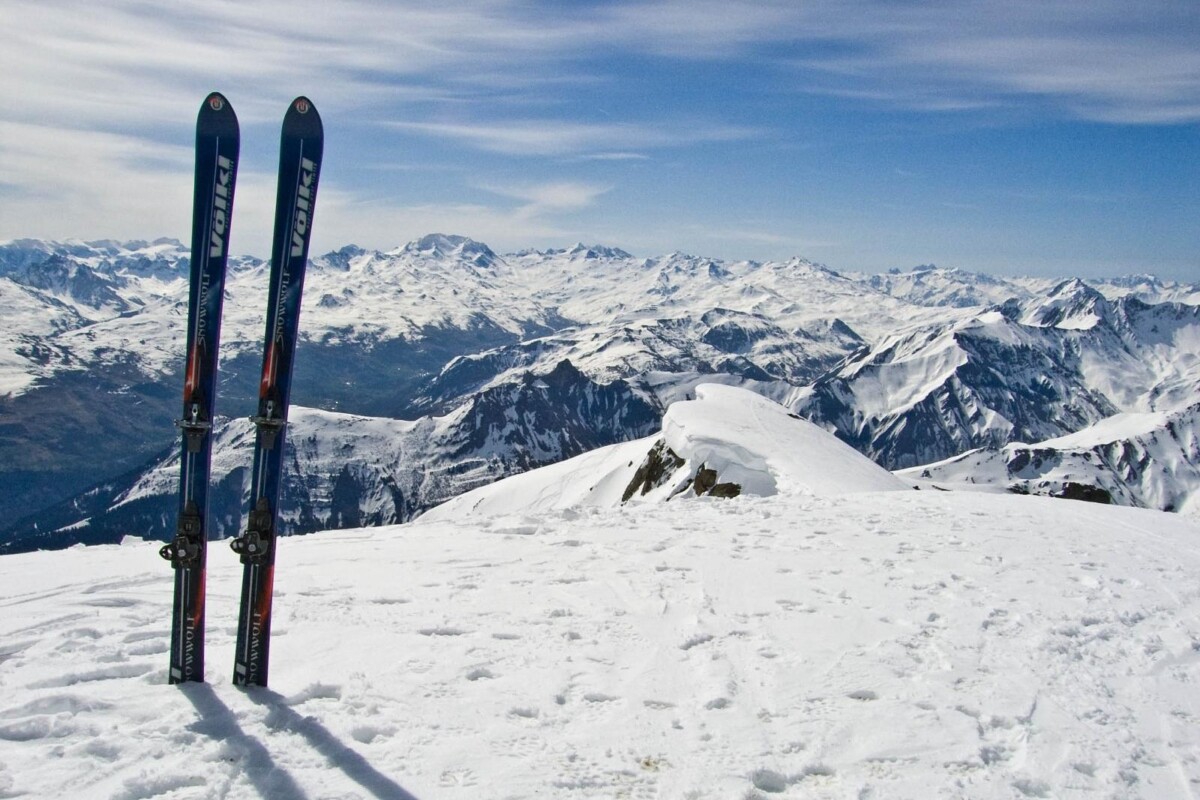For the past almost 80 years, snowmaking has become more and more prominent in the ski industry, due to the lasting effects of climate change. Winter seasons are not as cold, there are shorter weather windows and ski resorts are not getting as much snow. In the late 1980s something unprecedented happened, the ski resorts recorded economic losses due to successive bad snow seasons. Therefore, the common solution has become creating artificial snow. Machines freeze water into snow crystals, essentially mechanizing the formation of snow. Many question the practicality of using snowmaking to mitigate climate change due to its negative environmental effects. This article looks at how snowmaking has boomed in the French Alps, and whether it is the all-around best resource that can be used.

The Importance of Ski Tourism to the French Alps
Ski tourism is extremely important to the French Alps. It is one of the most significant economic sectors for the French mountainous region. In Laurent Vanat’s “2020 International Report on Snow & Mountain Tourism,” France was listed as having one of the largest ski markets, with around 50 million skiers in the year 2019. It draws millions of tourists every year–the European Alps attract 43% of worldwide skiing visits. Further, the French Alps hosted the 1924, 1968, and 1992 Winter Olympics. Those peaks are home to some of the most famous snow sports areas such as Les Trois Vallées and Portes du Soleil. With their apparent importance to skiing, it is no surprise that the French Alps must also adjust to combat the threat of climate change.
The French Alps are not unfamiliar with the effects of climate change on skiing resorts and snow sports. According to David Robinson of Rutgers University, the snow season in the Alps has gotten shorter and the snow is melting faster than it previously did. According to the European Environment Agency, there has been a decline in the snow season by 5 days each decade in the northern hemisphere, starting in the 1970s. The average European season is now 38 days shorter than in 1960. Even more worrisome, the Alps have been warming faster than other parts of the world; they have been experiencing a 2 degrees Celsius rise since the end of the 19th century. This has led to a decline in ski resort profits; with less time for people to enjoy resorts because there has been less snow, resorts have been taking in less money. The decrease had been gradual until the late 1980. With natural snowfall declining, there were successive winters with little snowfall. For the first time, ski resorts were operating at a loss. This is where snowmaking came in. Ski resort owners, operators, and ski lift operators were all looking for a way to guarantee snow cover enough for people to enjoy snow sports more consistently and to create lengthier seasons. They also needed to keep up with the impending competitive economic pressure–other resorts might have more snow, which added to the new demands of ski tourism. Because the ski tourism industry has always been heavily snow-dependent, climate change was making that sector of the economy more vulnerable.
What is Snowmaking and How Does it Work?
Snowmaking uses a snow gun or snow cannon to produce artificial snow utilizing water and pressurized air. It is a supplement for natural snow, not commonly a full replacement. Snowmaking allows resorts to improve how reliable their snow cover will be for their visitors, especially in the late autumn to early spring season.
First, snowmaking needs water. Therefore, resorts need reservoirs of water as sources for all their snowmaking needs. This source can be either a natural reservoir such as a river, or something man-made. The water is pumped up the mountains in pipes and then the water molecules are transformed into ice crystals through freezing. Then the air is added, and the result is artificial snow that is sprayed all over the grounds of a resort. However, there is more that goes into making artificial snow sustainable.
The success of snowmaking is heavily dependent on weather conditions. Most importantly, snowmaking needs cold weather for it to be sustainable. In the snowmaking science world, wet bulb temperature is a key concept. It is defined by A.M.Y. Razak as “the lowest temperature to which air can be cooled by the evaporation of water into the air at a constant pressure.” It is measured by wrapping a wet cloth around the thermometer. For snowmaking to work, a wet bulb temperature of at least below 28°F must be reached. Humidity, too, is a significant concern. Damper air removes less moisture from the snow, which means that it must be colder for water droplets to form snow crystals. The colder and dryer the air is, the better the conditions are for making snow.

History of Snowmaking in the French Alps
Snowmaking began being used in the French Alps in 1973. The pioneer of snowmaking in France was Flaine, a resort located in the Grand Massif, Haute Savoie. At that time, ski resorts were still developing. There was much skepticism about artificial snow production. Moreover, into the 1980s, snowmaking was not easy and affordable. Complex and sophisticated equipment was required, so it was not an investment that many resorts could undertake. Those that did were mainly from the Haute Savoie region. That skepticism persisted into the 1990s. Many areas saw snowmaking as a last resort. Toward the end of the 1990s, however, a shift began, and more ski resorts became equipped with snowmaking machinery. Snowmaking then grew to be a powerful investment for ski resorts in the French Alps. A group of French researchers led by Lucas Berard-Chenu state that it is currently the second investment most expensive item for these resorts.
Snowmaking has certainly boomed since the 70s in the French Alps. In 2009, the number of ski areas equipped with snowmaking technology within the French Alps was 20%. Based on the snowmaking research conducted by Pickering and Buckley, up to 37% of the French Alps could be seen covered in artificial snow in 2010. By then, around 61 million dollars had been invested in snowmaking technology for the region. A group of French researchers estimated snowmaking would be incorporated in 43% of facilities by 2020.
French ski resorts had begun to recognize the importance of the investment and started putting enormous amounts of money into this technology. They were helped by the growing automation of the nexy generation of snowmaking systems toward the end of the 80s. In an interview with a research development director of a snowmaking company between October 2019 and November 2020, Lucas Berard-Chenu’s research team found that automated systems uniquely benefited European facilities. The more temperate climate of these areas meant that enhanced snowmaking addressed the challenges of their shorter weather windows. Significantly, resorts were able to decrease their labor costs with these newer automated machines. The mayor of a ski resort whom the researchers interviewed claimed that, “From 1989 to now, the efficiency of snow guns has been multiplied by 15 or 16. That means that with the energy required for one snow gun in 1989, we can (now) run 15: we made a revolutionary step to increase the production.”

Snowmaking Changed in the French Skiing Industry
Snow reliability is the most obvious challenge for resorts that snowmaking has adddressed. This new reliability is an essential foundation of the ski industry. Tourists demanded it. After all, resorts could not be falling behind their counterparts. This pressure encouraged ski resort operators adopt snowmaking and–very importantly–to make organizational changes to use the technology. The economic advantages of these improved systems could not be ignored. People operating at various levels at resorts seconded these sentiments in interviews with Lucas Bernard-Chenu’s French research team.
The CEO of a ski lift company who remained anonymous in interviews explained: “Snowmaking as a commercial advantage has also been promoted by tour operators … Since they were simultaneously present in many different ski resorts at the same time, they were able to compare what ski resort operators could offer.” With seasonal ski lift tickets becoming more popular in recent years, ski resorts need to attract customers with longer seasons and reliable snow to remain competitive. For them to be able to give this assurance of snow in advance, snowmaking needs to be integrated into their operations. A mayor who remained anonymous in an interview conducted between October 2019 and November 2020 even stated “Snowmaking is not even a negotiating point. It is obvious that a local authority which deals with potential investors shall guarantee ski-in/ski-out access.” These assumptions are not unwarranted; the numbers show that snowmaking infrastructure directly impacts the number of skiers that visit a resort. In their research of 109 French ski resorts, Martin Falk and Laurent Vanat found that an average increase of 10% higher capital stock in snowmaking can lead to an increase of 8% in skier visits.
Environmental Impact of Snowmaking in the French Alps
Snowmaking is a direct response to changes in the environment due to climate change. However, they happen to contribute to a growing environmental crisis.
First and foremost, the water usage of snowmaking is a concern for many. Huge volumes of water are consumed in the process of creating artificial snow. In 2009 alone, 19 million cubic meters of water were used in France to produce snow. To cover just an area of a resort around 1.6km long, 20 thousand cubic meters of water is usually needed. Also, according to Les Arcs, a ski resort located in Savoie, France, snowmaking in the country uses as much water as would a town with 170,000 inhabitants. The issue here is that huge volumes of water are being taken from local water sources which in turn harms the environment. There are environmental systems that depend on this water, for example, plants and animals are affected when the soil quality is harmed by this.
Secondly, energy consumption, too, is troubling. Snowmaking machines can use massive amounts of energy in their operation. The Naturschutz Federation estimates that in the Alps alone artificial snow machines consume 2100 gigawatts of electricity. This is the equivalent of the yearly energy consumption of half a million families. Excessive energy consumption has direct impacts on the environment. Some of these include water and air pollution, and most importantly, these processes contribute to climate change. Therefore, there are many concerns that snowmaking is worsening the climate situation in this regard.

Adjustments that Ski Resorts Can Make
The issue for ski resorts is that mountainous regions are only getting warmer. Therefore, the efficiency of snowmaking is on a decline from here on out. In the Alps, Daniel Scott, Natalie Knowles, and Robert Steiger estimate that in the next ten to thirty years 30% of snow cover will be lost. With the earth only continuing to get warmer, it is recommended that resorts design infrastructure and activities that are not snow reliant. This would allow them to have stable tourism as it seems to be inevitable that winter snow seasons will shorten. Resorts can use the environment all year round to their advantage, rather than have to adjust it artificially. Some activities suggested by the International Commission for the Protection of the Alps that are eco-friendly include hiking, biking, throwing festivals, and cross-country skiing. Resorts can also try to adapt snowmaking to decrease its environmental footprint. For instance, they can create reservoirs with co-benefits and use zero-carbon electrical grids.
Snowmaking now plays a huge role in the ski tourism industry in the French Alps. There are many economic benefits, but their negative impacts need to be addressed, not just for the environment, but also for the long-term sustainability of ski tourism as a whole.
Acknowledgements
I would like to thank Professor Judith Miller for helping me along the way in completing this project.
Sources:
Bemis, Michael. Snow Waste. Bloomington: iUniverse, 2003.
Berard-Chenu, Lucas, et al. “Do Changes in Snow Conditions Have an Impact on Snowmaking Investments in French Alps Ski Resorts?.” International Journal of Biometeorology 65 (2021): 659-675. https://doi.org/10.1007/s00484-020-01933-w
Berard-Chenu, Lucas, et al. “Snowmaking Development Trajectories in French Alpine Ski Resorts: The Influence of Local Specificities and Regional Support Policies.” Journal of Alpine Research| Revue de géographie alpine 4 (2022). https://doi.org/10.4000/rga.10465
Berard-Chenu, Lucas, et al. “The Deployment of Snowmaking in the French Ski Tourism Industry: a Path Development Approach.” Current Issues in Tourism (2022): 1-18. https://doi.org/10.1080/13683500.2022.2151876
Berard-Chenu, Lucas, et al. “Past Changes in Natural and Managed Snow Reliability of French Alps Ski Resorts from 1961 to 2019.” The Cryosphere 16.3 (2022): 863-881. https://doi.org/10.5194/tc-16-863-2022
Evette, Andre, et al. “Environmental Risks and Impacts of Mountain Reservoirs for Artificial Snow Production in a Context of Climate Change.” Journal of Alpine Research| Revue de géographie alpine 99-4 (2011). https://doi.org/10.4000/rga.1481
Falk, Martin, and Laurent Vanat. “Gains from Investments in Snowmaking Facilities.” Ecological Economics 130 (2016): 339–49. doi:10.1016/j.ecolecon.2016.08.003.
Fox, Porter. Deep: The Story of Skiing and the Future of Snow. Jackson Hole: Rink House Productions, 2013.
Gerbaux, Martin, et al. “Snow Reliability and Water Availability for Snowmaking in the Ski Resorts of the Isere Departement (French Alps), Under Current and Future Climate Conditions.” Journal of Alpine Research| Revue de géographie alpine 108-1 (2020). https://doi.org/10.4000/rga.6742
GlobalData Thematic Research. “Snowmaking: A Ski Resort’s Double-Edged Sword.” Hotel Management Network, Last modified January 30, 2023. https://www.hotelmanagement-network.com/comment/snowmaking-ski-resorts/.
Morin, Samuel, et al. “Quantifying the Hydrological Disturbances Induced by Snow Grooming and Snowmaking in Ski Resorts: a Case Study in the French Alps.” EGUsphere (2022): 1-24. https://doi.org/10.5194/egusphere-2022-1186
Rixen, Christian, et al. “Winter Tourism and Climate Change in the Alps: An Assessment of Resource Consumption, Snow Reliability, and Future Snowmaking Potential.” Mountain Research and Development 31.3 (2011): 229-236. https://doi.org/10.1659/MRD-JOURNAL-D-10-00112.1
Rogstam, Jörgen, and Mattias Dahlberg. “Energy Usage for Snowmaking.” Energi & Kylanalys AB (2011). https://www.bachler.ch/media/archive1/produkte/NESSy_Energy_usage_for_snowmaking_EN.pdf
Scott, Daniel, Natalie Knowles, and Robert Steiger. “Is Snowmaking Climate Change Maladaptation?” Journal of Sustainable Tourism (2022): 1-22. https://doi.org/10.1080/09669582.2022.2137729
Parkin, Simon. “Snow Machines and Fleece Blankets: Inside the Ski Industry’s Battle with Climate Change.” The Guardian. Last modified December 19, 2019. https://www.theguardian.com/world/2019/dec/19/snow-machines-fleece-blankets-inside-ski-industry-battle-with-climate-change-alpine-resorts.
Pickering, Catherine Marina, and Ralf C Buckley. “Climate Response by the Ski Industry: the Shortcomings of Snowmaking for Australian Resorts.” Ambio vol. 39,5-6 (2010): 430-8. doi:10.1007/s13280-010-0039-y
Roncucci, Régine. “Artificial Snow May Help the Alps Now, but It Comes at a Cost to the Future.” Global Center on Adaptation, Last modified March 6, 2020. https://gca.org/artificial-snow-may-help-the-alps-now-but-it-comes-at-a-cost-to-the-future/.
Spandre, Pierre, et al. “Winter Tourism Under Climate Change in the Pyrenees and the French Alps: Relevance of Snowmaking as a Technical Adaptation.” The Cryosphere 13.4 (2019): 1325-1347. https://doi.org/10.5194/tc-13-1325-2019
Spandre, Pierre, et al. “Snowmaking in the French Alps. Climatic Context, Existing Facilities and Outlook.” Journal of Alpine Research| Revue de géographie alpine 103-2 (2015). https://doi.org/10.4000/rga.2913
Spandre, P., et al. “Climate Controls on Snow Reliability in French Alps Ski Resorts.” Scientific reports 9.1 (2019): 8043. https://doi.org/10.1038/s41598-019-44068-8
Steiger, Robert, and Marius Mayer. “Snowmaking and Climate Change.” Mountain research and development 28.3 (2008): 292-298. https://doi.org/10.1659/mrd.0978
Vadant, Laurent. “2020 International Report on Snow & Mountain Tourism: Overview of the Key Industry Figured for Ski Resorts,” April 2020. https://www.vanat.ch/RM-world-report-2020.pdf.
“All about Artificial Snow-Making.” 2014. MountainPassions. August 19, 2014. https://www.mountainpassions.com/winter/ski-features/snow-making/ .
“Eco-Friendly & Sustainable Skiing in Les Arcs.” SeeLesArcs.com, Last modified October 18, 2022. https://www.seelesarcs.com/environmental.
“Wet-Bulb Temperature.” Wet-Bulb Temperature – an Overview | ScienceDirect Topics. Accessed April 27, 2023. https://www.sciencedirect.com/topics/engineering/wet-bulb-temperature.
“Snowmaking 101 – A Beginner’s Guide – Snow State.” Snow State – Home Snowmaking Experts, Last modified July 23, 2022. https://snow-state.com/snowmaking-101/.


Okay! She is HER. A writer !! -Jan
Great article ! I learned something new today